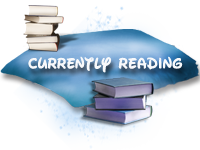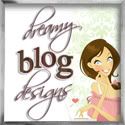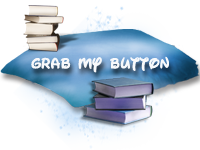There is a lot of research that goes into any novel, particularly those in the historical fiction genre. For anyone who's ever wondered, "How do they find OUT all this stuff?" or "I wonder how much of this is true," we have a resident expert to answer some questions!
First of all, welcome to Imagination in Focus! Thanks for being with us tonight. Would you describe your journey researching you family and the historical time-period?
I started with two articles from Minneapolis newspapers rescued from a burn barrel after Great-grandmother Helga died. Even after writing to librarians across the country for more newspaper articles, though, I couldn’t find out much more about the walk itself, so I broadened the research to the places Clara and Helga passed through and the people they met.
There’s danger in being a research person. I can spend half a day researching what kind of compass Eric might have given Clara, right down to finding antique compasses on E-bay and taking notes on the wording on the box of a Keuffel and Esser. I’d guess 99% of my research never makes it into the book in a way that is obvious to the reader, but it helps draw me into that other world. Besides – it’s fun.
For The Year We Were Famous, I read biographies of the people they met, habits of bears and rattlesnakes, frontier cures for blisters, and the history of women’s suffrage. I found an old atlas with maps of all the old rail road lines and spent weeks establishing a plausible day-by-day route for every mile of their 232-day trek. Besides reading books, I scrolled through microfilm of old newspapers for articles on the presidential race of 1896, and took notes on the ads for corsets, bicycle costumes, bicycles and typewriters. I drove part of Clara and Helga’s route with my daughter and stopped in at a little museum in Rawlins, Wyoming, where I bought a pamphlet about a Victorian-era local woman doctor who became the model for Clara’s ‘someone to talk to.’ I approached the Internet like a treasure hunt, hopping from clue to clue to research relevant trivia like the history of Underwood typewriters, the elevation of the pass in the Blue Mountains, and what the Indian Agent for the Umatilla reservation looked like.
road lines and spent weeks establishing a plausible day-by-day route for every mile of their 232-day trek. Besides reading books, I scrolled through microfilm of old newspapers for articles on the presidential race of 1896, and took notes on the ads for corsets, bicycle costumes, bicycles and typewriters. I drove part of Clara and Helga’s route with my daughter and stopped in at a little museum in Rawlins, Wyoming, where I bought a pamphlet about a Victorian-era local woman doctor who became the model for Clara’s ‘someone to talk to.’ I approached the Internet like a treasure hunt, hopping from clue to clue to research relevant trivia like the history of Underwood typewriters, the elevation of the pass in the Blue Mountains, and what the Indian Agent for the Umatilla reservation looked like.
E-bay was another great source research. I bought a rubberized poncho of the type Clara might have worn, and bid on period postcards of the places they passed through. A postcard of Mrs. William McKinley helped inspire the chapter on meeting the president. Another postcard depicting Umatilla twins laced into cradleboards found its way into another chapter.
To get into the head of a young woman of the late Victorian age, I gave up reading contemporary fiction for a year and read only books Clara might have read for school or for diversion. I found dime novels on the Internet, and that that florid writing style influenced how I had Clara write about shooting the brigand in Oregon and demonstrating the curling iron to Native Americans in Utah. All told, I tallied up about six million words of background reading.
I never would have thought of E-bay! Research does seem challenging, but also really fun and informative. What were the challenges of blending fact and fiction?
I didn’t intend to write fiction. I couldn’t find enough facts about the walk itself, thought, so I had to start connecting the dots between known facts with my imagination. It took years to work up to putting words into the mouths of Clara and Helga. They were real people, my Great-aunt and Great-grandmother, and they weren’t still around to defend themselves if I portrayed them inaccurately. But to write about characters anyone would want to read about, I had to ascribe motives and dreams to them. Although I didn’t know what they thought and felt, by reading diaries and biographies of other women of the times—particularly suffragists—I could at least give them the thoughts of the collective New Woman.
Whose writing has influenced you, and who do you like to recommend to young adults?
As an eight or nine year-old, I read most of the Victorian children’s classics: Frances Hodgson Burnett’s Secret Garden, George MacDonald’s Princess and Curdie books, Louisa May Alcott’s Little Women, Anna Sewell’s Black Beauty, Dinah Craik’s Little Lame Prince, and the Fairy tales of Hans Christian Anderson. Besides the Victorians, I enjoyed books with a hint of fantasy, like My Father’s Dragon, The Lion, the Witch, and the Wardrobe, and the Mrs. Piggle-Wiggle,series; books set in other eras and places, like the Betsy-Tacy series and Anne of Green Gables; and books which featured braver and more talented children that I could pretend to be, like Posy and her sisters in Noel Streatfield’s Ballet Shoes and the Melendy children in The Saturdays.
Thank you very much for joining me! It's been great to have an author's insight into what it takes to balance research and writing.
Carole Estby Dagg's The Year we were Famous is published by Clarion (Harcourt) and will be released this Monday!
The Year We Were Famous @ Amazon















